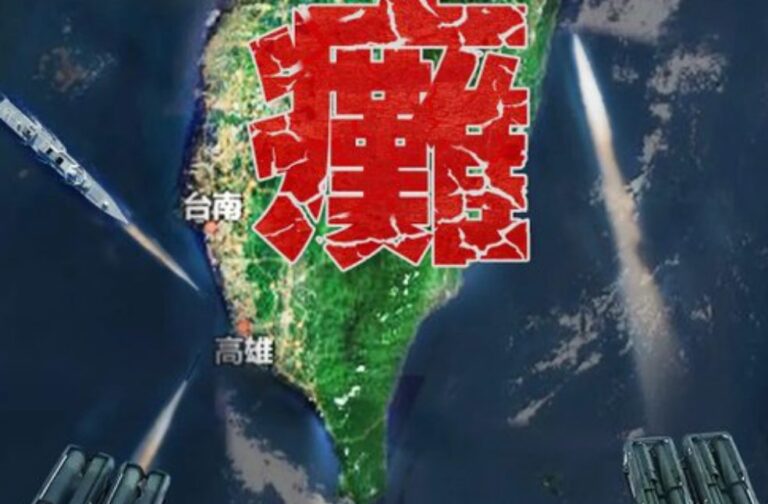China: China’s military has conducted a live-fire exercise in the Taiwan Strait, simulating strikes on key ports and energy facilities. The drill, codenamed “Strait Thunder,” marks an escalation of Beijing’s military activities around Taiwan, which it claims as its territory.
Taiwan’s presidential office issued a strong condemnation, calling the exercises “military provocations.” The drills come with heightened tensions, with China ramping up its rhetoric against Taiwan’s President Lai Ching-te, whom Beijing has labelled a “parasite” and “separatist.”
The People’s Liberation Army (PLA) stated that the exercises serve as a “serious warning and powerful containment” against what it calls “Taiwan independence” forces. China’s state media has reinforced this stance, releasing cartoons depicting Lai as a “parasite poisoning Taiwan” and featuring images of him being grilled over a fire. A PLA video titled “Subdue demons and vanquish evils” likened China’s military prowess to the magical abilities of the Monkey King, a legendary Chinese character.
The specific trigger for this week’s drills was not explicitly stated, though Beijing and state media have pointed to policies introduced by Lai last month aimed at countering Chinese influence operations. However, the timing suggests that China delayed its military activities until after key diplomatic and business events, including the Boao Forum, which concluded on March 28.
China’s #Shandong #AircraftCarrierTaskGroup conducted exercise in areas to the east of #Taiwan Island on April 2 to test capabilities of integrated operations inside and outside island chain, multi-dimensional blockade and control, and joint operations.https://t.co/sXBKTkCzGD pic.twitter.com/H5JcGo9Bn7
— China Bugle 中国军号 (@ChinaBugle) April 2, 2025
The White House responded to China’s latest military manoeuvres by reaffirming its dedication to Taiwan. A spokesperson for President Donald Trump underscored “the importance of maintaining peace in the Taiwan Strait.” The US State Department echoed this sentiment, emphasising Washington’s “enduring commitment” to Taiwan.
Meanwhile, US Defence Secretary Pete Hegseth, during a recent visit to Asia, strongly criticised China’s military aggression and pledged “robust, ready, and credible deterrence” in the Taiwan Strait.
Experts suggest that the PLA’s increasing military activity is shifting towards a strategy of regular drills rather than reactions to specific events. Some analysts view the exercises as a potential rehearsal for a real blockade aimed at overthrowing Taipei’s government in the future. The PLA described its latest operations as “closing in on Taiwan from all directions.”
Analysts also believe Beijing is using these drills to pressure Taiwan’s population into accepting eventual annexation by China. However, public opinion polls consistently show that the vast majority of Taiwanese people oppose unification under the Chinese Communist Party.
Taiwanese officials anticipate further PLA military exercises later this year, possibly timed to coincide with the anniversary of Lai’s inauguration or Taiwan’s National Day in October. Despite the growing pressure, Taiwan’s military sees these drills as opportunities to explore China’s manoeuvres and bolster its defence strategies in the face of potential future conflict.



